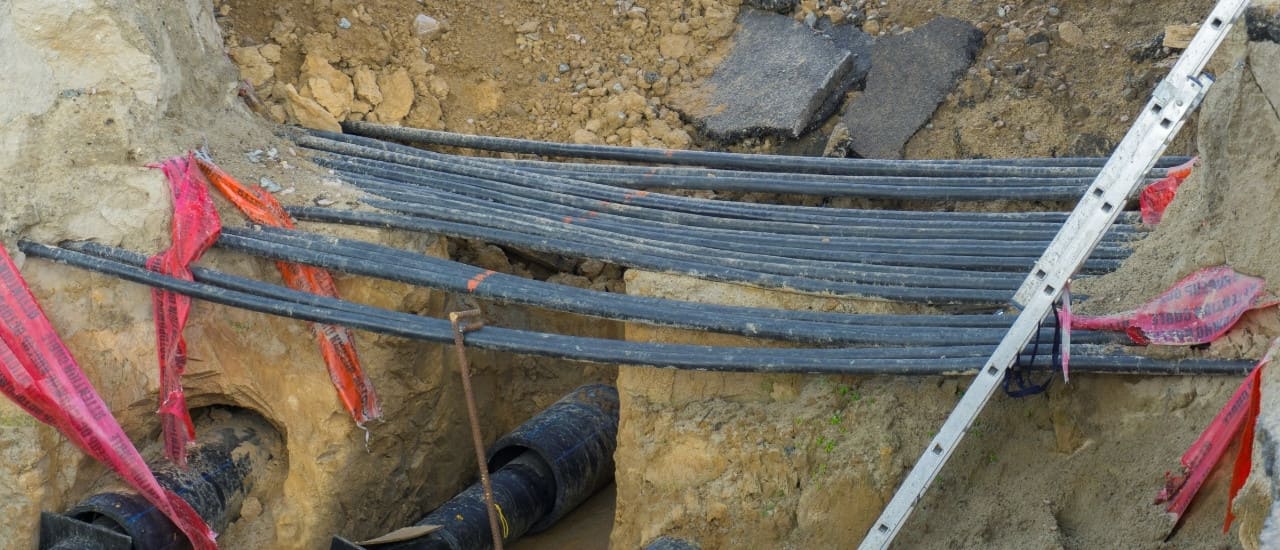
What is GPR?
Ground penetrating radar is used in many areas to observe man-made and natural features. GPR is used to detect underground tanks, metallic and non-metallic pipes, power lines, detection of underground conduit such as water pipes, rebar and post-tensioning cables inside the concrete.
Ground-penetrating radar waves are equal to those of a cell phone or Wi-Fi network, while x-rays require a 50-foot clearance before being used for safety reasons. In general, ground-penetrating radar is the most cost-effective option and the fastest method of testing concrete.
The principle of using radio waves to determine internal ground structures has been known for a long time. Among the first works in this field, the use of radio echo sounders to determine the thickness of ice layers in Antarctica and the Arctic and to measure the thickness of glaciers is undoubtedly the greatest success. Ground-penetrating radar detection in non-glacial areas was initiated in the early 1970s. The first achievements focused on work on permafrost soils.
Underground tank detection: Type of utility
Detection of traditionally unlocatable features
- Detection of non-utility structures.
- Underground tank detection.
- Detection of metallic and non-metallic pipes.
- Detection of drainage tiles.
- Utility detection with damaged tracer wires.
Completing the traditional electromagnetic technology
- Data integration with software such as Google Earth.
- Nearby utility delineation.
- Providing reliable depth estimates.
- Visualize data for good mapping.
Underground detection by GPR of untraceable utilities
Underground detection by GPR can be done for untraceable or abandoned utilities that are not detected by traditional methods. Ground-penetrating radar detection is very effective for mapping utilities.
Public services in close proximity to each other
Underground conduit detection can be performed in a single survey. The availability of field interpretations and display options allows for easy mapping of multiple utility lines on site.
Detection of underground tanks and buried infrastructures
Non-utility features can be easily located by GPR, such as underground storage tanks.
Verification of locations
GPR is also used to verify locations made with other technologies. Many companies hire GPR service providers to ensure that their site is thoroughly cleaned and accurately marked before excavation begins.
Mapping of many utilities at different depths
Since GPR can locate all utilities, including underground conduit detection, power lines, it is possible to obtain a complete picture of all buried utilities on a project site early in the project planning.
Advantages of underground pipe detection by GPR
There are many advantages and benefits of underground detection by GPR:
Precise imaging
Ground-penetrating radar provides accurate imagery and, with the ability to analyze slices at different depths, it provides the depth and orientation of buried objects. Dual-technology systems, which combine ground-penetrating radar with power cable detection systems, go further and indicate which conduits contain dangerous power lines.
Effective
While the need for these services is growing, the funds available to pay for them are hard to find. Having the ability and reputation to do a thorough job without repeat visits or mistakes is a real competitive advantage. Speed is good, efficiency is better. A professional quality GPR is able to provide this advantage. Vendors should tailor their efforts to site conditions, performing reconnaissance scans to decide where and if a more complete scan is needed.
Workflow integration
Service providers need to integrate seamlessly into the workflow and project management of their clients, especially for large projects. In fact, they can gain a competitive advantage by offering ways to reduce the time and money spent on large project processes. For example, real-time evaluation of scan results by off-site reviewers can reduce the time between scanning and cutting, often avoiding the need for a second site visit.
Non-invasive
It is always best to perform evaluation and testing without resorting to costly and damaging destructive testing. Even when expensive destructive testing or coring is required, targeting it where it is most effective saves time and money.
Difficult sites
GPR sensors are small and can be used in tight spaces and in any orientation on floors, walls and ceilings. GPR is applied from the exposed surface and is able to find features in slabs on the ground. It can even identify voids in surrounding materials. Large areas can be mapped efficiently by deploying GPR sensor on a cart or vehicle-drawn platform.
Health and safety
There are important regulatory, financial and social reasons to be concerned about workplace safety, and ground-penetrating radar is the most effective technology to address these concerns. Not only is ground-penetrating radar safe for the infrastructure, it is also safe for operators and the general public. You can use GPR safely in a crowded public place without any risk to the people present.
